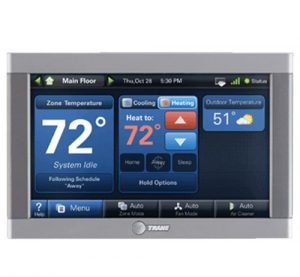It’s something we hear about all the time as part of homeownership horror stories. Mold. It’s an all too common problem in the world of home energy and home safety, yet one that can be avoided with the right combination of knowledge, care products and professional help.
While there are certainly some problems areas in the home, mold can grow almost anywhere in the home. It can be found on interior walls, carpet, damp or dirty clothing, food, paper, and even in places you can’t see, such as the backside of drywall, areas inside walls around leaking or condensing pipes, and above ceiling tiles.
As a follow up to a recent post on home humidity management, we have decided to put together a blog post series on mold eradication and prevention. If you think you could be at risk for mold growth in your home, don’t hesitate to get it taken care of right away, starting with these tips!
- Building a new home or making a big renovation? Use mold-resistant products. While they may be a bit more expensive, mold-resistant products can save big mold removal or cleaning bills down the road. Mold-resistant drywall or mold inhibitors in paint can go a long way toward preventing any mold from developing—even in high-risk areas.
- Know your home and your surrounding environment. As is the case with most home performance and safety improvements made to your house, knowing your own house and the climate in which it resides is perhaps the most important step in combating mold. Many climates and areas are much more susceptible to mold growth. If you live in a wet area or floodplain, your home may be at greater risk without taking the necessary steps to waterproofing your house—both inside and out. Adjusting your humidity, as mentioned in a previous post in this series, requires a unique level depending on your home and comfort preferences. Knowing this information (and more) will allow you to pick the best first steps toward getting rid of mold or avoiding it altogether.
- Clean or repair roof gutters. Water management outside your home can sometimes be just as important as humidity management inside the home. Gutters play a huge role in keeping water from running down your exterior walls and getting into the home, where it can cause big problems. Regularly inspect and clean your gutters to ensure they are working properly. Look carefully for yellow or brown water stains on the gutters, which can indicate leaks that could lead to much bigger problems.
We’ll have one more additional moisture management and mold prevention post with some more tips on the blog shortly – don’t miss it.
If you have been experiencing mold issues or if you think your home is at a higher risk and want some expert advice on avoid any problems in the future for your home, don’t hesitate to give us a call at BelRed today.







